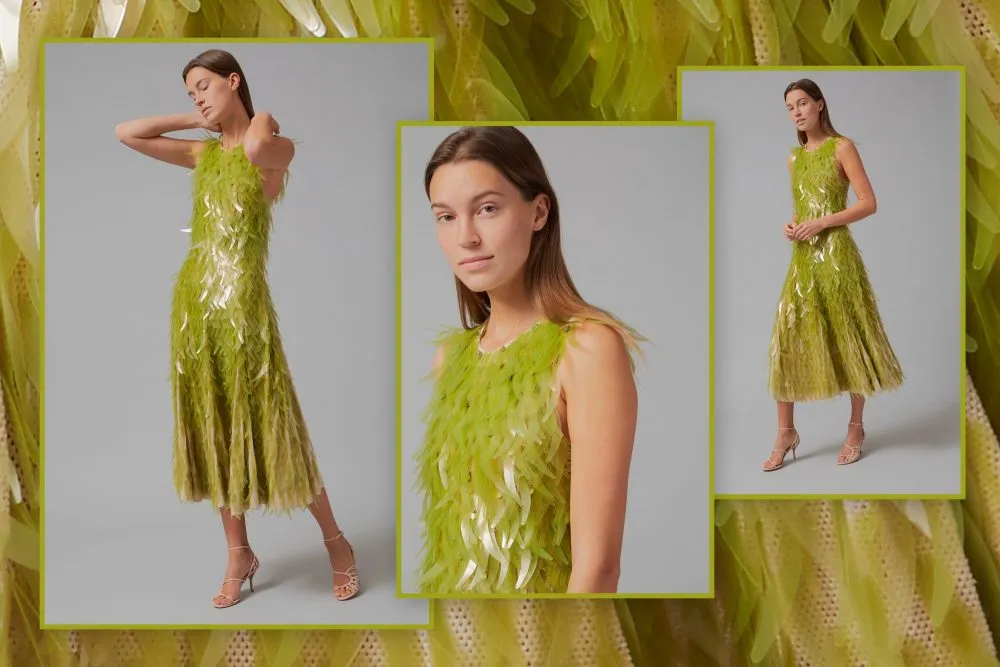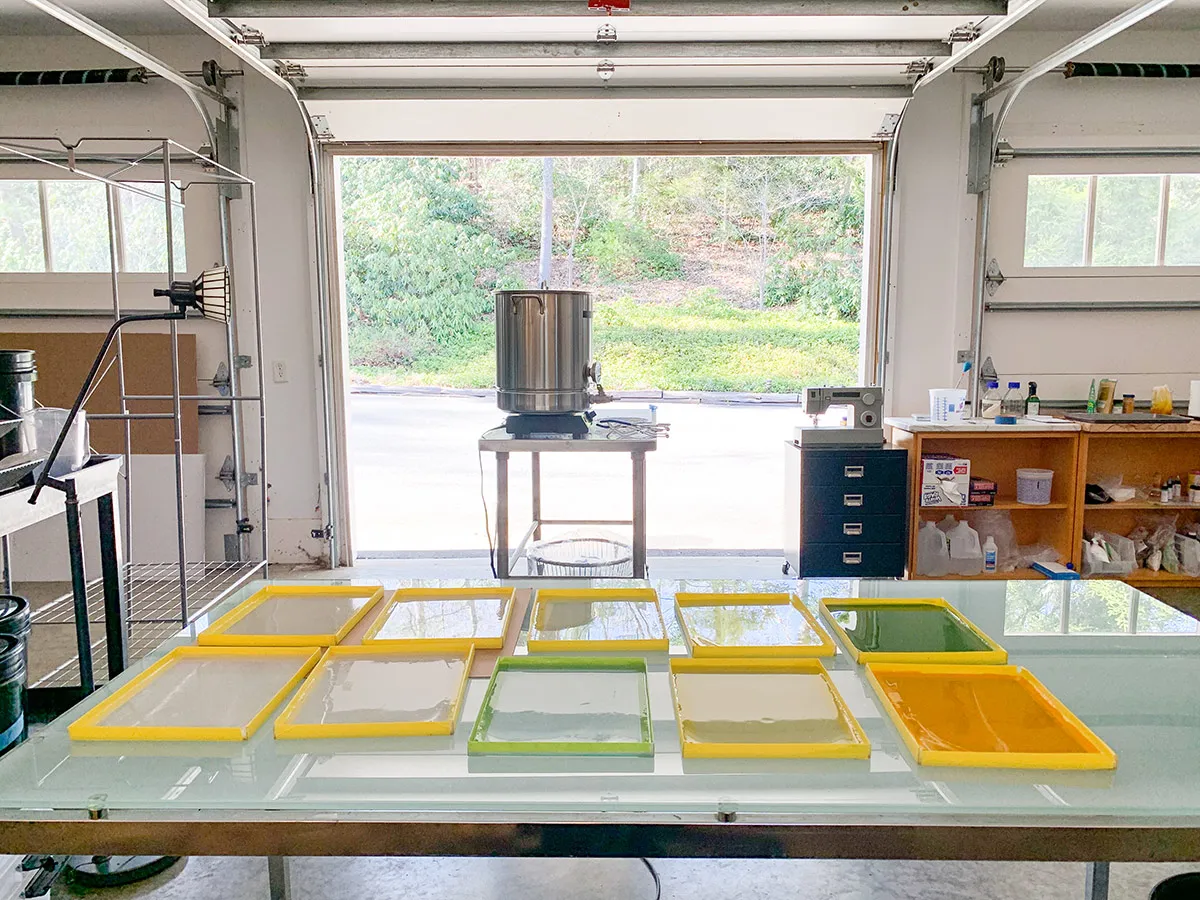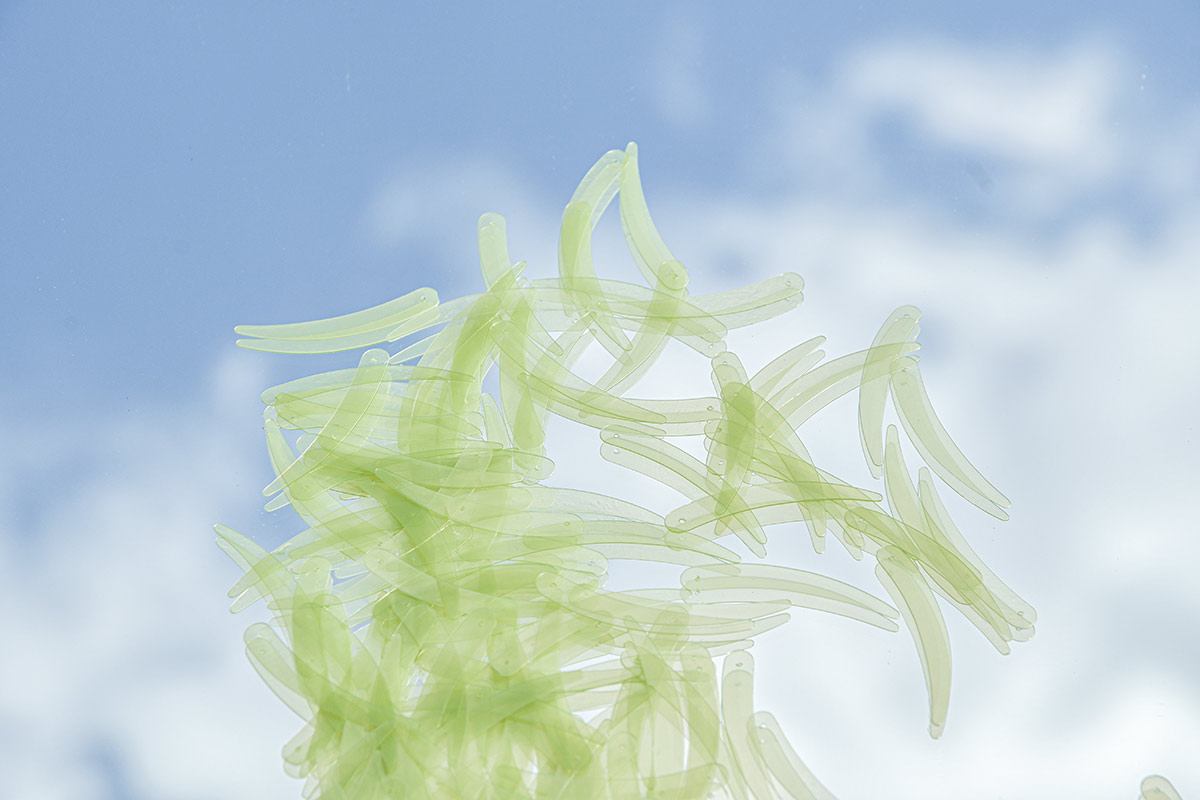This Algae Sequin Adorned Couture Dress Envisions a Carbon-free Future for Fashion
It is well-known that the fashion industry is one of the major contributors to environmental, social, and labor issues – from polluting fast fashion to toxic chemicals and synthetic residual. It is a never-ending hamster wheel of fast fashion, pressurizing the customers to buy more and more.
Combining sustainable innovation to tackle the threat of climate change, interdisciplinary designer and researcher Charlotte McCurdy creates more sustainable materials, and brings a change to the whole production process. McCurdy has joined forces with other New-York based designer, Phillip Lim to create a carbon-free dress, adorned with bioplastic sequin – which is derived from algae.

Phillip Lim teamed up with industrial designer Charlotte McCurdy to create a carbon-free dress covered in bioplastic sequins | Image: One X One
This initiative is a part of the One X One incubator project backed by the Slow Factory Foundation, pairing fashion designers with sustainable innovators like McCurdy and Lim. They created an algae-based sequin dress that aims to reduce carbon-sourced materials. Sequins give life on the runaway, but just like glitter and microbead material, plastic-based sequins don’t break down easily in the environment after being discarded and contaminate waterways and affect marine life.
McCurdy believes that sustainability in fashion is not about just using organic or recycled material, it is essential to get on zero emissions. There is a significant need to replace 60% of the textiles sourced from fossil fuels. Even the sustainable designers who considered renewable cotton and sustainable materials reach out to polyester.
This innovative sequence is developed from algae-sourced bioplastic film made from macro-algae which sucks out atmospheric carbon, resulting in carbon-negative material. McCurdy and Lim decided to create a viable alternative to conventional plastic sequins.

The Algae sheet is created by pouring the liquid material into the mold. | Image: One X One
To create sustainable sequins, the algae-based bioplastic sheets are first created by exposing the algae to heat, which helps the algae to bind together. The liquid material is poured into molds. Glass molds are used so that the reflective qualities are transferred to the sheet sequins.
Mineral pigments are also used over conventional dyes to give translucent sequin a shimmery green color. McCurdy remarks that most of the conventional dyes and pigments are originally sourced from petrochemicals.

The bioplastic sheet is cut in sequins and sewn to the biodegradable mesh dress | Image: One X One
The green shiny sequins were cut out and sent off in the mail and were sewn to the dress by Lim’s team. The base mesh dress was made from SeaCell, a cellulose fiber sourced from seaweed and bamboo. Additionally, even when the dress is composted at the end of its life, 50% of the carbon will be trapped in the soil.
According to McCurdy,
With a little back of the envelope math, the carbon dioxide that has been trapped inside of the sequins of this dress by the algae would fill 15 bathtubs.
While there are no plans to commercialize the plant-based sequins nor the dress, McCurdy’s project envisions a concept for a sustainable future of fashion.
Via: Dezeen


